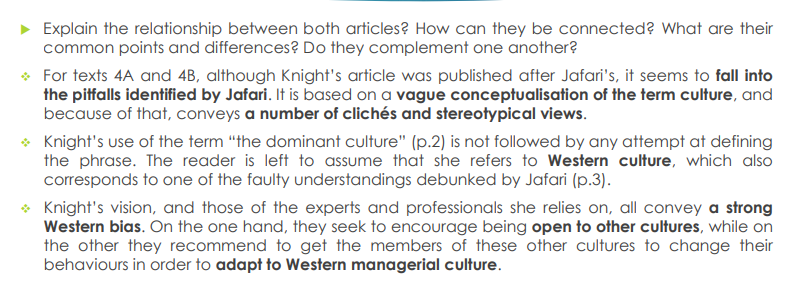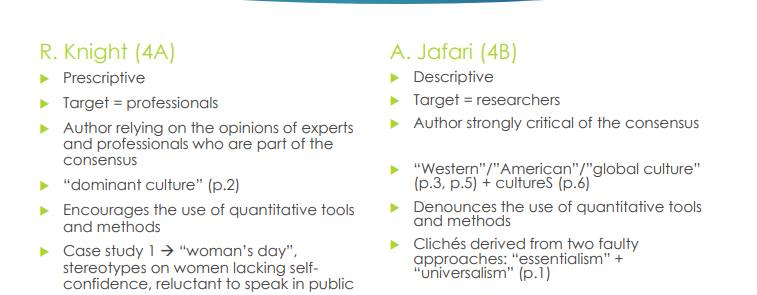“Misconceptions of Culture in Cross Cultural Business and Management Studies”
1/6
Earn XP
Description and Tags
- Aliakbar Jafari
Name | Mastery | Learn | Test | Matching | Spaced |
|---|
No study sessions yet.
7 Terms
Who is the author of the text? What is he specialists of?
Aliakbar Jafari is an academic, specialised in marketing and management from the University of Strathclyde in Glasgow. He also has practical international experience as a professional and used to work in the car industry in Iran.
. What is the source of the text? Briefly describe its characteristics (type of publication, how often is it published, subjects, etc.).
The article was published in the International Journal of Management Concepts and Philosophy, which is an online, international, multidisciplinary, scholarly publication issued quarterly.
What is the date of publication? What are the relevant elements that can be found in the text about the context?
The article was published in 2009, after research on how globalisation impacted managerial techniques and practices had already been carried out for three decades.
What is the title of the text? What can you guess from it about the authors’ thesis?
The title of the article, “Misconceptions of Culture in Cross Business Management Studies”, clearly shows that the author is going to disagree with most of what had been written before on culture, since the word “misconceptions” refers to mistaken views due to faulty understanding. Therefore, Jafari seeks to clear the misunderstandings surrounding the term “culture”, which have given rise to false ideas and stereotypes spreading widely through research and the media, thereby impacting managerial and business practices.
What type of methodology is used in the article? What is the goal?
Jafari’s approach is qualitative since he has analysed academic articles to criticise the lack of rigorous conceptualisation on culture. He shows how it led to a number of clichés and stereotypical views predominant in business and management research. He calls for a more nuanced and refined understanding of the concept in order to avoid simplistic conclusions and shortcuts which ultimately affect managerial techniques and practices.
The function of his article is mainly descriptive since he identifies flaws in the current state of scientific literature, in order to raise awareness and improve subsequent research.
Explain the relationship between both articles? How can they be connected? What are their common points and differences? Do they complement one another?

Comparing and contrasting
